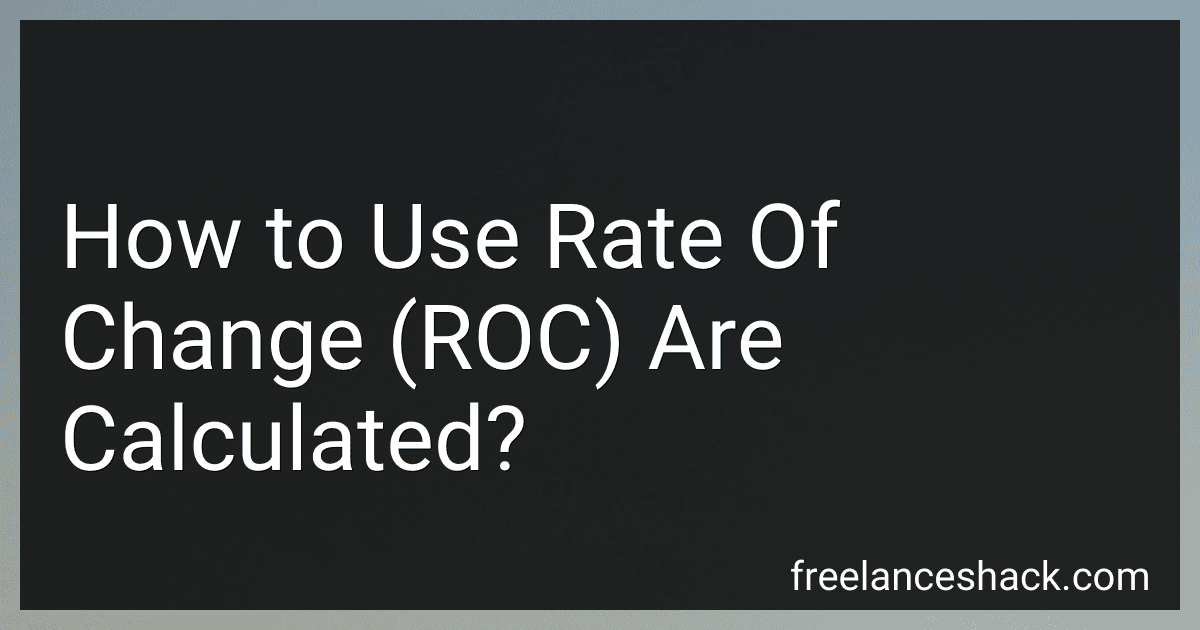Posts (page 63)
-
 11 min readThe Detrended Price Oscillator (DPO) is a technical analysis indicator that helps traders identify cycles and overbought/oversold conditions in the market. It is used to remove the long-term trend from the price data, allowing traders to focus on short-term fluctuations.To calculate the DPO, follow these steps:Determine the desired calculation period: The period chosen for the DPO represents the length of the cycle you are interested in. Common periods used are 20, 30, or 50 days.
11 min readThe Detrended Price Oscillator (DPO) is a technical analysis indicator that helps traders identify cycles and overbought/oversold conditions in the market. It is used to remove the long-term trend from the price data, allowing traders to focus on short-term fluctuations.To calculate the DPO, follow these steps:Determine the desired calculation period: The period chosen for the DPO represents the length of the cycle you are interested in. Common periods used are 20, 30, or 50 days.
-
 6 min readExtensions in Swift are a powerful feature that allows developers to add new functionalities to existing classes, structs, enums, or protocols. They provide a way to extend the behavior of a type without modifying its original implementation.To use extensions in Swift, you simply define them with the "extension" keyword, followed by the name of the type you want to extend.
6 min readExtensions in Swift are a powerful feature that allows developers to add new functionalities to existing classes, structs, enums, or protocols. They provide a way to extend the behavior of a type without modifying its original implementation.To use extensions in Swift, you simply define them with the "extension" keyword, followed by the name of the type you want to extend.
-
 7 min readIn Swift, protocols are used to define a blueprint of methods, properties, and other requirements that a class or structure should conform to. They allow us to define a set of rules or standards that can be applied to different types.To define a protocol in Swift, we use the protocol keyword followed by the name of the protocol.
7 min readIn Swift, protocols are used to define a blueprint of methods, properties, and other requirements that a class or structure should conform to. They allow us to define a set of rules or standards that can be applied to different types.To define a protocol in Swift, we use the protocol keyword followed by the name of the protocol.
-
 8 min readThe Ichimoku Cloud, also known as Ichimoku Kinko Hyo, is a technical analysis tool developed by Japanese journalist Goichi Hosoda. It is used to identify trends, determine support and resistance levels, generate trading signals, and provide an overall understanding of market sentiment. Ichimoku Cloud is widely used by both beginners and experienced traders.The Ichimoku Cloud consists of several components that work together to provide a holistic view of the market.
8 min readThe Ichimoku Cloud, also known as Ichimoku Kinko Hyo, is a technical analysis tool developed by Japanese journalist Goichi Hosoda. It is used to identify trends, determine support and resistance levels, generate trading signals, and provide an overall understanding of market sentiment. Ichimoku Cloud is widely used by both beginners and experienced traders.The Ichimoku Cloud consists of several components that work together to provide a holistic view of the market.
-
 8 min readCandlestick patterns are widely used in day trading as a tool for technical analysis. These patterns reflect the price movements of an asset over a specific time period, usually depicted in charts. Each candlestick represents a specific time interval (such as one minute, five minutes, or one hour) and provides information about the opening, closing, high, and low prices within that period.
8 min readCandlestick patterns are widely used in day trading as a tool for technical analysis. These patterns reflect the price movements of an asset over a specific time period, usually depicted in charts. Each candlestick represents a specific time interval (such as one minute, five minutes, or one hour) and provides information about the opening, closing, high, and low prices within that period.
-
 5 min readIn Swift, inheritance allows a class to inherit properties, methods, and other characteristics from another class. To inherit a class in Swift, you need to follow these steps:Define a new class and specify the superclass you want to inherit from using the colon (:) notation. class MyClass: Superclass { // class definition } Add any additional properties and methods specific to your subclass after the class declaration.
5 min readIn Swift, inheritance allows a class to inherit properties, methods, and other characteristics from another class. To inherit a class in Swift, you need to follow these steps:Define a new class and specify the superclass you want to inherit from using the colon (:) notation. class MyClass: Superclass { // class definition } Add any additional properties and methods specific to your subclass after the class declaration.
-
 6 min readTo create and use classes in Swift, you can follow these steps:Define a class: Start by using the class keyword followed by the name of the class. For example, class MyClass. Add properties: Inside the class, declare the properties with their types. Properties represent the characteristics or attributes of an object. For instance, var name: String declares a property named name of type String. Add methods: Methods define the behavior of the class.
6 min readTo create and use classes in Swift, you can follow these steps:Define a class: Start by using the class keyword followed by the name of the class. For example, class MyClass. Add properties: Inside the class, declare the properties with their types. Properties represent the characteristics or attributes of an object. For instance, var name: String declares a property named name of type String. Add methods: Methods define the behavior of the class.
-
 12 min readThe Mass Index (MI) is a technical indicator used in financial analysis to identify potential reversals in the price trend of a stock or other financial instrument. It was developed by Donald Dorsey in 1992.To read the Mass Index, you need to understand two components: the high-low range period (typically 9) and the Mass Index period (typically 25). The high-low range period calculates the difference between the high and low prices over a specified number of periods.
12 min readThe Mass Index (MI) is a technical indicator used in financial analysis to identify potential reversals in the price trend of a stock or other financial instrument. It was developed by Donald Dorsey in 1992.To read the Mass Index, you need to understand two components: the high-low range period (typically 9) and the Mass Index period (typically 25). The high-low range period calculates the difference between the high and low prices over a specified number of periods.
-
 7 min readIn Swift, closures are self-contained blocks of functionality that can be assigned to variables or passed as arguments to functions and methods. They capture and store references to any constants and variables from the context in which they are defined, effectively creating a "closure" around those captured values.To use closures in Swift, here are a few key points to keep in mind:Closure Syntax: Swift provides a concise syntax for writing closures.
7 min readIn Swift, closures are self-contained blocks of functionality that can be assigned to variables or passed as arguments to functions and methods. They capture and store references to any constants and variables from the context in which they are defined, effectively creating a "closure" around those captured values.To use closures in Swift, here are a few key points to keep in mind:Closure Syntax: Swift provides a concise syntax for writing closures.
-
 8 min readThe Rate of Change (ROC), also known as the momentum indicator, is a mathematical tool used to measure the speed at which a variable changes over a specific period of time. It assesses the percentage change in a variable relative to its original value.To calculate the ROC, follow these steps:Select a specific time period over which you want to calculate the rate of change. This could be days, weeks, months, etc.
8 min readThe Rate of Change (ROC), also known as the momentum indicator, is a mathematical tool used to measure the speed at which a variable changes over a specific period of time. It assesses the percentage change in a variable relative to its original value.To calculate the ROC, follow these steps:Select a specific time period over which you want to calculate the rate of change. This could be days, weeks, months, etc.
-
 5 min readWorking with dictionaries in Swift allows you to store and retrieve data using key-value pairs. It gives you a way to organize and manipulate data efficiently.
5 min readWorking with dictionaries in Swift allows you to store and retrieve data using key-value pairs. It gives you a way to organize and manipulate data efficiently.
-
 6 min readWhen working with Swift, it is essential to handle errors gracefully to avoid crashes or unexpected behavior in your applications. Error handling in Swift involves using the do-catch statement, which allows you to catch and handle errors that may occur during the execution of your code. Here are the key aspects of error handling in Swift:Throw: To indicate an error has occurred, you can use the throw keyword followed by an error object.
6 min readWhen working with Swift, it is essential to handle errors gracefully to avoid crashes or unexpected behavior in your applications. Error handling in Swift involves using the do-catch statement, which allows you to catch and handle errors that may occur during the execution of your code. Here are the key aspects of error handling in Swift:Throw: To indicate an error has occurred, you can use the throw keyword followed by an error object.